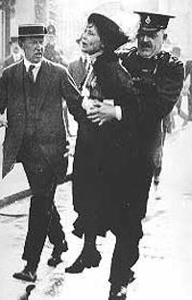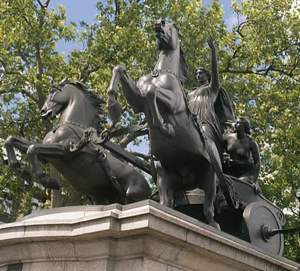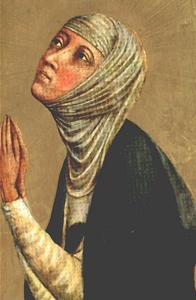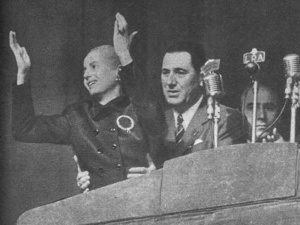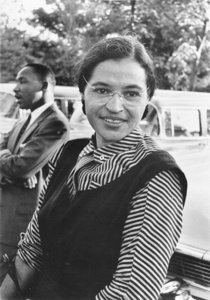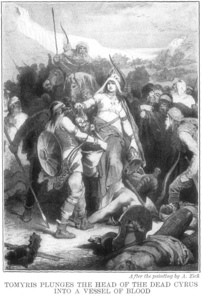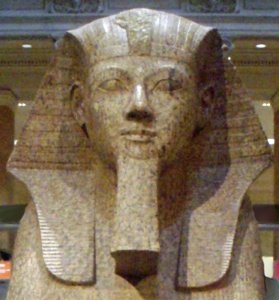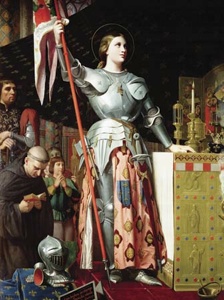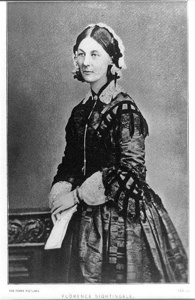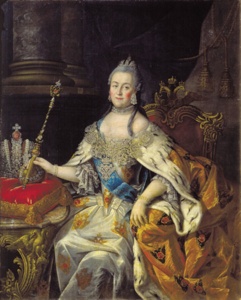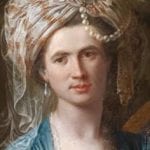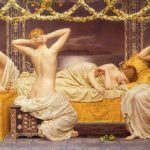 Weird Stuff
Weird Stuff  Weird Stuff
Weird Stuff  Mysteries
Mysteries 10 Tragic Disappearances and Deaths in Joshua Tree National Park
 History
History 10 Ways Childhood Really Sucked in the Old West
 Music
Music 10 Name Origins of Famous Bands from the 1990s
 Religion
Religion 10 Biggest Turnarounds by the Catholic Church
 Weird Stuff
Weird Stuff 10 Unbelievable Times Laws Had Unintended Consequences
 Humans
Humans Ten Historic Women Who Deserve Way More Credit Than They Got
 Movies and TV
Movies and TV 10 Films That Spawned Major Lawsuits
 History
History Ten Times Towns Were Wiped Off the Face of the Earth
 Creepy
Creepy 10 of the Most Disturbingly Haunted Public Houses in the UK
 Weird Stuff
Weird Stuff 10 Niche Subcultures That Are More Popular Than You Might Think
 Mysteries
Mysteries 10 Tragic Disappearances and Deaths in Joshua Tree National Park
 History
History 10 Ways Childhood Really Sucked in the Old West
Who's Behind Listverse?

Jamie Frater
Head Editor
Jamie founded Listverse due to an insatiable desire to share fascinating, obscure, and bizarre facts. He has been a guest speaker on numerous national radio and television stations and is a five time published author.
More About Us Music
Music 10 Name Origins of Famous Bands from the 1990s
 Religion
Religion 10 Biggest Turnarounds by the Catholic Church
 Weird Stuff
Weird Stuff 10 Unbelievable Times Laws Had Unintended Consequences
 Humans
Humans Ten Historic Women Who Deserve Way More Credit Than They Got
 Movies and TV
Movies and TV 10 Films That Spawned Major Lawsuits
 History
History Ten Times Towns Were Wiped Off the Face of the Earth
 Creepy
Creepy 10 of the Most Disturbingly Haunted Public Houses in the UK
Top 10 Greatest Women in History
Following on from our lists of evil women and men in history, we are introducing our first list of great people. The women I have selected have been great leaders, warriors, visionaries, or humanitarians. It has been incredibly difficult to rank this list (with the exception of position 1) so you should not consider it to be absolute.
10. Emmeline Pankhurst 1858 – 1928 Wikipedia
In 1889 Emmeline Pankhurst founded the Women’s Franchise League, followed by the Women’s Social and Political Union in 1905. She was joined by her daughters Christabel and Sylvia among others in the fight for Women’s Suffrage. Pankhurst’s tactics for drawing attention to the movement led to her being imprisoned several times, and even experienced force-feeding after going on hunger strike several times. She was also instrumental in placing women in men’s jobs during World War 1. She received funding of several thousand pounds from the government to aid her in encouraging employers that women were in fact fit to undertake these jobs. Her efforts finally came to fruition in March 1918, when women over the age of 30 were given the right to vote. Later that same year, women over the age of 21 were given the right to become Members of Parliament, despite the fact they were still unable to vote. It wasn’t until 1928 that women were finally given the same voting rights as men in the United Kingdom.
9. Boudica d. AD 60 or 61 Wikipedia
Boudica was a queen of the Iceni people of Norfolk who lead an uprising of the tribes against the occupying forces of the Roman Empire. Her husband, Prasutagus had left his Kingdom jointly to his daughters and the Roman Emperor when he died. The Roman Empire allowed allied independence only for the lifetime of the current king, and inheritance though the male line only was permitted. As he had left his kingdom to his daughters, his will was ignored and his kingdom annexed as if it had been conquered. It is reported that Boudica was flogged and her daughters raped. She was later chosen as the leader of her people and their neighbors in an uprising against the Romans. Her army fell on the poorly defended city of Camulodunum (Colchester), and destroyed it, besieging the last defenders in the temple for two days before it fell. Archaeology shows the city was methodically demolished. Quintus Petillius Cerialis attempted to relieve the city, but his forces were routed. His infantry was wiped out: only the commander and some of his cavalry escaped. Tacitus says the Britons had no interest in taking or selling prisoners, only in slaughter by gibbet, fire, or cross. Dio’s account gives more prurient detail: that the noblest women were impaled on spikes and had their breasts cut off and sewn to their mouths, “to the accompaniment of sacrifices, banquets, and wanton behaviour” in sacred places, particularly the groves of Andraste. Ironically, the great anti-imperialist rebel is now identified with the head of the British Empire, and her statue stands guard over the city she razed to the ground.
8. Catherine of Siena 1347 – 1380 Wikipedia
Saint Catherine of Siena (born 23rd of 25 children) was a scholastic philosopher and theologian. She received no education and at age seven decided to become a lay member of the Dominican religious order (against the wishes of her parents). She lived at home as an anchoress in order to be able to perform acts of self denial that would not have been permitted in a nunnery. Catherine dedicated her life to helping the ill and the poor, where she took care of them in hospitals or homes. She wrote letters to men and women in authority, especially begging for peace between the republics and principalities of Italy and for the return of the papacy from Avignon to Rome. She carried on a long correspondence with Pope Gregory XI, also asked him to reform the clergy and the administration of the Papal States. Incredibly, the Pope, inspired by her wisdom, did return the Papal administration to Rome. Catherine’s letters are considered one of the great works of early Tuscan literature. More than 300 letters have survived. Pope Pius II canonized Catherine in 1461 and she is now one of three female Doctors of the Church. She is also one of the patron saints of Europe. You can read the letters of Saint Catherine of Siena online.
7. Eva Peron 1919 – 1952 Wikipedia
Eva Peron (Evita) was First Lady of Argentina from 1946 until her death in 1952. During her time as wife of President Juan Peron, she became powerful within the Pro-Peronist trade unions. Eventually, she founded the charitable Eva Perón Foundation, and the nation’s first large-scale female political party, the Female Peronist Party. Her charitable organization built homes for the poor and homeless, and also provided free health care to citizens. Eventually, Evita became the center of her own vast personality cult and her image and name soon appeared everywhere, with train stations, a city (“Ciudad Evita”), and even a star being named after her. Despite her dominance and political power, Evita was always careful to never undermine the important symbolic role of her husband. On August 22, 1951 the unions held a mass rally of two million people called “Cabildo Abierto” at which they begged Eva Peron to run for vice president. It has been claimed that “Cabildo Abierto” was the largest public display of support in history for a female political figure. She eventually declined to run and died the following year of Cancer.
6. Rosa Parks 1913 – 2005 Wikipedia
Rosa Parks was an African American civil rights activist whom the U.S. Congress later called “Mother of the Modern-Day Civil Rights Movement”. On December 1, 1955, Parks became famous for refusing to obey bus driver James Blake’s order that she give up her seat to make room for a white passenger. This action of civil disobedience started the Montgomery Bus Boycott, which is one of the largest movements against racial segregation. In addition, this launched Martin Luther King, Jr., who was involved with the boycott, to prominence in the civil rights movement. She has had a lasting legacy worldwide. Rosa Parks resided in Detroit until she died at the age of ninety-two on October 24, 2005. City officials in Montgomery and Detroit announced on October 27, 2005 that the front seats of their city buses would be reserved with black ribbons in honor of Parks until her funeral. Her casket was transported to Washington, DC, and taken, aboard a bus similar to the one in which she made her protest, to lie in honor in the U.S. Capitol Rotunda (making her the first woman and second African American ever to receive this honor).
5. Tomyris 6th century BC Wikipedia
Tomyris (reigned c. 530 BC) was a queen of the Massagetae, an Iranian people of Central Asia east of the Caspian Sea. She was famous for defeating and killing the Persian emperor Cyrus the Great during his invasion and attempted conquest of her country. When Cyrus captured Tomyris’ son, she sent a letter to him denouncing his treachery and challenging him to honorable battle. In the fight that ensued, the Persians were defeated with high casualties, Cyrus himself was killed, and Tomyris had his corpse beheaded. She allegedly kept his head with her at all times and drank wine from it until her death. Persian and Central Asian folklore maintain a rich store of other tales about Tomyris. It is believed that the word Tomis present day Constanta comes from Tomyris.
4. Hatshepsut, King of Egypt Reign 1479 BC to 1458 BC Wikipedia
Hatshepsut is generally regarded by Egyptologists as one of the most successful female pharaohs, reigning longer than any other woman of an indigenous Egyptian dynasty. Although records of her reign are documented in diverse ancient sources, Hatshepsut was once described by early modern scholars as only having served as a co-regent from about 1479 to 1458 BC, during years seven to twenty-one of the reign previously identified as that of Thutmose III. It is now known that Hatshepsut assumed the position of pharaoh and her reign as king is usually given as twenty-two years since Manetho assigns her a reign of 21 years and 9 months. As Hatshepsut reestablished the trade networks that had been disrupted during the Hyksos occupation of Egypt during the Second Intermediate Period, thereby building a wealth of the Eighteenth Dynasty that has become so famous since the discovery of the burial of one of her descendants, Tutankhamun, began to be analysed. Hatshepsut was one of the most prolific builders in ancient Egypt, commissioning hundreds of construction projects throughout both Upper and Lower Egypt, that were grander and more numerous than those of any of her Middle Kingdom predecessors. Although many Egyptologists have claimed that her foreign policy was mainly peaceful, there is evidence that Hatshepsut led successful military campaigns in Nubia, the Levant, and Syria early in her career.
3. Joan of Arc 1412 – 1431 Wikipedia
Saint Joan of Arc was a 15th century national heroine of France. She was tried and executed for heresy when she was only 19 years old. The judgment was declared invalid by the Pope and she was declared innocent and a martyr 24 years later. She was beatified in 1909 and canonized as a saint in 1920. Joan asserted that she had visions from God which told her to recover her homeland from English domination late in the Hundred Years’ War. The uncrowned King Charles VII sent her to the siege at Orléans as part of a relief mission. She gained prominence when she overcame the dismissive attitude of veteran commanders and lifted the siege in only nine days. Several more swift victories led to Charles VII’s coronation at Reims and settled the disputed succession to the throne. She remained astute to the end of her life and rehabilitation trial testimony frequently marvels at her astuteness. Her subtle replies under interrogation even forced the court to stop holding public sessions.
2. Florence Nightingale 1820 – 1910 Wikipedia
Florence Nightingale who came to be known as “The Lady with the Lamp”, was a pioneer of modern nursing, a writer and a noted statistician. Her lasting contribution has been her role in founding the modern nursing profession. She set a shining example for nurses everywhere of compassion, commitment to patient care, and diligent and thoughtful hospital administration. The work of the Nightingale School of Nursing continues today. The Nightingale building in the School of Nursing and Midwifery at the University of Southampton is named after her. International Nurses Day is celebrated on her birthday each year. Florence Nightingale’s most famous contribution came during the Crimean War, which became her central focus when reports began to filter back to Britain about the horrific conditions for the wounded. Florence and her compatriots began by thoroughly cleaning the hospital and equipment and reorganizing patient care. Nightingale believed the high death rates in the hospitals were due to poor nutrition and supplies and overworking of the soldiers. Consequently, she reduced deaths in the Army during peacetime and turned attention to the sanitary design of hospitals.
1. Catherine II, Empress of Russia 1729 – 1796 Wikipedia
Catherine II (the Great) reigned as Empress of Russia for 34 years, from June 28, 1762 until her death. She exemplifies the enlightened despot of her era. During her reign Catherine extended the borders of the Russian Empire southward and westward to absorb New Russia, Crimea, Right-Bank Ukraine, Belarus, Lithuania, and Courland at the expense of two powers — the Ottoman Empire and the Polish-Lithuanian Commonwealth. Catherine made Russia the dominant power in south-eastern Europe after her first Russo–Turkish War against the Ottoman Empire (1768–1774), which saw some of the greatest defeats in Turkish history, including the Battle of Chesma (5 July – 7 July 1770) and the Battle of Kagul (21 July 1770). Catherine’s patronage furthered the evolution of the arts in Russia more than that of any Russian sovereign before or after her. She subscribed to the ideals of the Enlightenment and considered herself a “philosopher on the throne”. She showed great awareness of her image abroad, and ever desired that Europe should perceive her as a civilized and enlightened monarch, despite the fact that in Russia she often played the part of the tyrant.
Notable Additions: Mother Theresa, Susan B Anthony, Cleopatra VII
This article is licensed under the GFDL. It uses material from the Wikipedia articles cited above.
